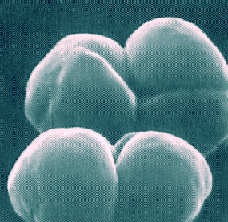The Thermoprotei is a class of the Thermoproteota.

In the taxonomy of microorganisms, the Methanomicrobia are a class of the Euryarchaeota.
In taxonomy, the Methanococcales are an order of the Methanococci.
Caldisphaeraceae are a family of archaea in the order Acidilobales.
Desulfurococcaceae are a family of the disc-shaped anaerobic microorganisms belonging to the order Desulfurococcales, in the domain Archaea. Members of this family are distinguished from the other family (Pyrodictiaceae) in the order Desulfurococcales by having an optimal growth temperature below 100 °C, rather than above 100 °C, and by being more diverse. Several genera of the family have been identified.
Methanobacteriaceae are a family of archaeans in the order Methanobacteriales.
Halalkalicoccus is a genus of the Halobacteriaceae.
Halobiforma is a genus of halophilic archaea of the family Natrialbaceae.
In taxonomy, Halogeometricum is a genus of the Haloferacaceae.
Halomicrobium is a genus of the Haloarculaceae.
In taxonomy, Halostagnicola is a genus of the Archaea.
Halarchaeum is a genus of halophilic archaea in the family of Halobacteriaceae.
Halobellus is a genus of halophilic archaea.
Halomarina is a genus of halophilic archaea in the family of Halobacteriaceae.
Halogranum is a genus of halophilic archaea in the family of Haloferacaceae.
Halorientalis is a genus of archaea in the family of Haloarculaceae.
Haloarchaeobius is a genus of halophilic archaea in the family of Halobacteriaceae.
Halapricum is a genus of halophilic archaea in the family of Haloarculaceae.
Halostella is a genus of halophilic archaea in the family of Halobacteriaceae.
Halohasta is a genus of halophilic archaea in the family of Halorubraceae.
